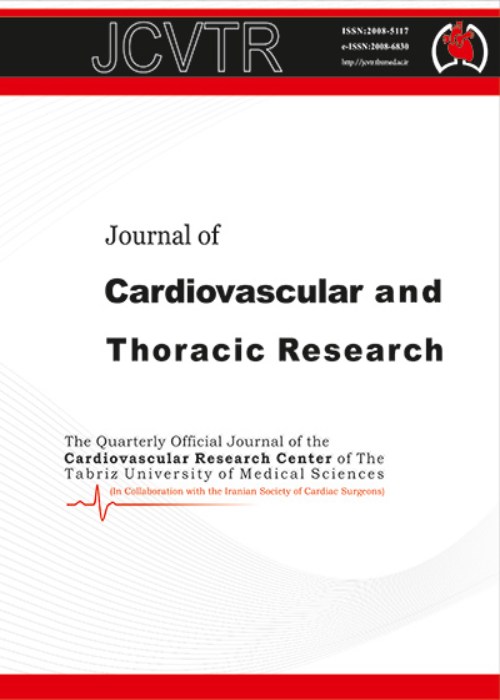Comparison of the Clinical Efficacy of Bovine Thrombin and Compression Method in Femoral Pseudo Aneurysm of Patients Undergoing per Coetaneous Coronary Intervention at Shaheed Rajaie Cardiovascular Medical and Research Center
Author(s):
Abstract:
Background
Pseudo aneurysm has been an increasingly common complication of catheterization procedures during the past two decades, with the greatest incidence being in the femoral artery. Treatment of the iatrogenic femoral artery pseudo aneurysm with the injection of thrombin is reported to be an efficacious and safe procedure. In this study, we evaluated the efficacy and success rate of per coetaneous ultrasonographically-guided thrombin injection and compression method for the treatment of pseudo aneurysm and to determine the effect of thrombin injection on systemic coagulation parameters. Methods
This Cohort clinical trial was conducted on patients with femoral pseudo aneurysm after percutaneous intervention (PCI) in Shaheed Rajaie Cardiovascular Medical and Research Center. The patients were divided into two randomized groups and treated with either the compression method or the percutaneous ultrasonographic-guided thrombin injection method. Pseudo aneurysm size, pseudo aneurysms neck size, thrombin dose, thrombosis time, outcome of therapy, and complications were documented prospectively. Duplex sonographic follow-up examinations were performed at 0 and 24 hours afterwards. Partial thrombin time as well as the Quick test (pro thrombin time) was monitored before and after the intervention. Results
Thirty patients with femoral pseudoaneurysm following catheterization between 15 and 85 years of age were enrolled in this study. The mean size of the pseudo aneurysms length was 2.45 ± 1.15cm (SD) and pseudo aneurysms width was 2.06 ± 1.07cm. In total, 13 thrombin injections were administered. The mean thrombin dose was 500-2000 IU. The success rate of thrombin injection was %92.30 (12 of 13 patients), which was significantly higher than 82.35% (13 of 17 patients) in the compression method (p value<0.05). No thrombo embolic, infectious, or allergic complications occurred. Conclusion
In this study, the percutaneous ultrasonographically-guided thrombin injection method was successful and safe in the management of femoral pseudoaneurysms. Changes in coagulating factors indicated the possibility of thrombin passage into the arterial circulation.Language:
English
Published:
Journal of Cardiovascular and Thoracic Research, Volume:3 Issue: 1, Apr 2011
Page:
1
magiran.com/p862749
دانلود و مطالعه متن این مقاله با یکی از روشهای زیر امکان پذیر است:
اشتراک شخصی
با عضویت و پرداخت آنلاین حق اشتراک یکساله به مبلغ 1,390,000ريال میتوانید 70 عنوان مطلب دانلود کنید!
اشتراک سازمانی
به کتابخانه دانشگاه یا محل کار خود پیشنهاد کنید تا اشتراک سازمانی این پایگاه را برای دسترسی نامحدود همه کاربران به متن مطالب تهیه نمایند!
توجه!
- حق عضویت دریافتی صرف حمایت از نشریات عضو و نگهداری، تکمیل و توسعه مگیران میشود.
- پرداخت حق اشتراک و دانلود مقالات اجازه بازنشر آن در سایر رسانههای چاپی و دیجیتال را به کاربر نمیدهد.
In order to view content subscription is required
Personal subscription
Subscribe magiran.com for 70 € euros via PayPal and download 70 articles during a year.
Organization subscription
Please contact us to subscribe your university or library for unlimited access!


